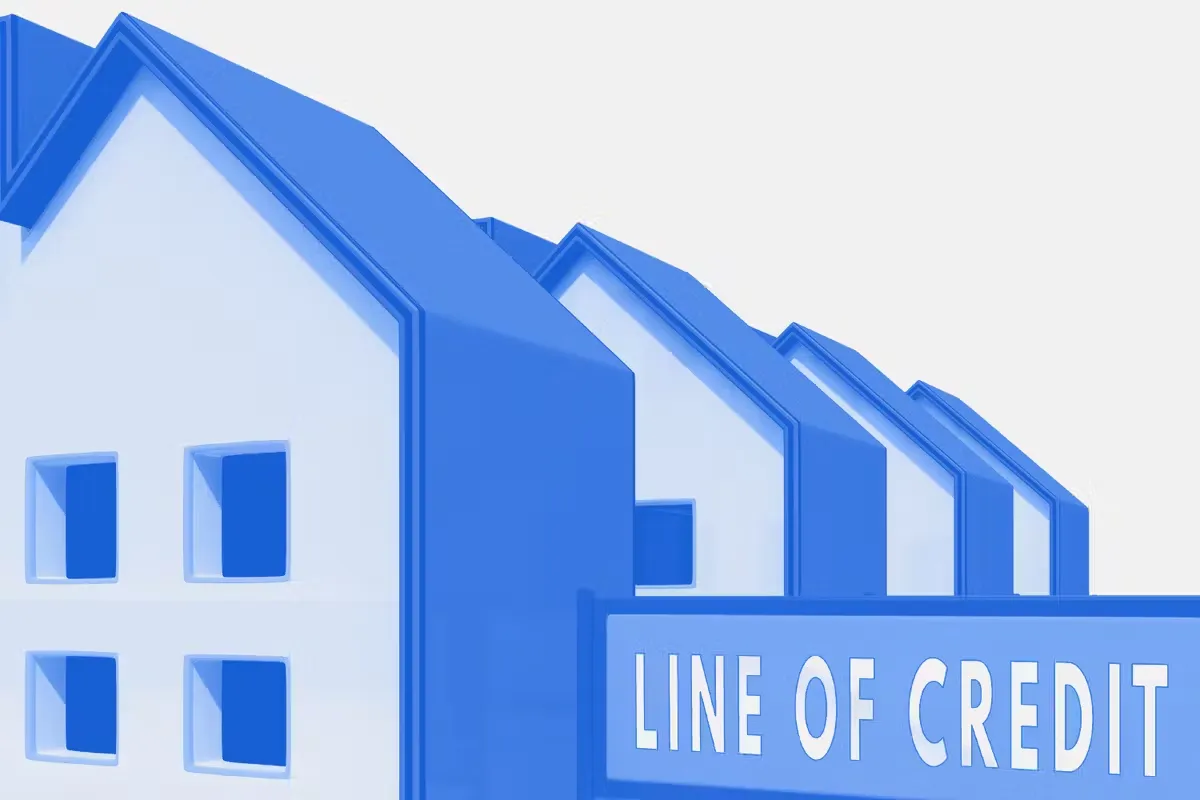
Guide to Homeownership: What is a HELOC?

If you’re hoping to complete some long-term home improvement projects or renovations, pay for college tuition, or consolidate debt, you might want to consider a home equity line of credit, or HELOC.
HELOCs offer more flexibility and convenience than other types of home equity loans, boasting comparatively-low variable interest rates—and the borrower only pays interest on the amount withdrawn.
There are also potential drawbacks with a HELOC. Just like any other financial product, it’s important to make sure it works for you. We’ll explain just what a HELOC is, how HELOCs work, as well as when a HELOC is the right tool to achieve your financial goals.
From Mortgages to Home Equity Loans
Our local, award-winning lending team is ready to help you begin today.
What is a HELOC?
A home equity line of credit, also known as a HELOC, is a revolving, variable-interest credit product that uses your home equity as collateral. HELOCs are similar to a credit card in that you apply for a specific amount of funds when the HELOC is established, much like a credit limit on a credit card. Then, you can choose to access the money in small increments (usually a set amount per withdrawal) whenever you’d like, you only pay interest on the amount you’ve withdrawn, and you only have to pay back the amount you withdraw.
How Does a HELOC Work?
HELOCs work differently than other types of home loans. Because they are a line of credit and not a lump sum payment, there are different phases to the loan, as well as special considerations that apply in the state of Texas.
Step 1: Determine How Much You Need
The first step to taking out a HELOC is to figure out how much you’d like the loan amount to be. In Texas, there are certain restrictions surrounding the maximum amount you can take out. The Lone Star State only allows homeowners to borrow 80 percent of the home’s market value, minus any unpaid mortgages. For instance, if your home is currently worth $400,000 and you owe $150,000 on the mortgage, the math looks like this:
($400,000 x .80) – $150,000 = $170,000
In this scenario, you can borrow up to a maximum of $170,000, although you don’t have to request the maximum loan amount. Every lender has their own minimum amount, so it’s important to gather that information as you do research.
Step 2: The Application
As with any loan, there are certain factors you’ll want to consider before choosing a lender, including the interest rate on the loan, as well as closing costs. Once you’ve decided which lender is best for you, you’ll need to submit an application.
The application process might be a little different with every lender, but the basics remain the same.
- You’ll be asked to sign several documents and provide several more confirming your income and debt history.
- Approval can take up to a week, and processing can take an addition 20 to 30 days.
- Once the HELOC is approved and processed, the state of Texas dictates a period of 12 days before closing and three days after.
- Once you’ve closed, you receive your funds four days later.
Step 3: The Draw Period
With HELOCs, the loan is broken down into two periods: the draw period and the repayment period. The draw period will vary based on the loan, but usually lasts between five to 15 years, with 10 years being the most common. During this period, you can withdraw funds in increments as you need them—for example, Amplify’s HELOCs have a $4,000 minimum draw—up to the limit. In the draw period, the only payments due are the minimum interest payments due on the balance.
While only the minimum interest payment is due during the draw period, you can make additional payments on the principal in Texas without penalty. This will reduce your monthly payment amount when you get to the next stage of your HELOC: the repayment period.
Step 4: The Repayment Period
After the draw period ends, the HELOC enters the repayment period, which is usually 10 years. Once this period starts, no more money can be drawn on your line of credit and you must start making monthly payments on the principal and interest. During this time, payments can increase significantly, so borrowers should have a repayment plan in place should you lose your job, make poor investments or encounter a drop in real estate prices.
HELOCs in Texas: A Few Special Considerations
The Lone Star State has some unique laws when it comes to using the equity in your home. If you plan to take out a HELOC, it’s important to understand how these laws might affect you. As with most laws, things can get complicated pretty quickly. However, from a high level perspective, you should be aware of the following:
- As mentioned above, you can’t use more than 80% of your home’s equity.
- Only your primary home can be used as collateral for a HELOC.
- You can only take out one home equity loan every 12 months on a property.
- HELOC repayments must occur at regular intervals of two weeks to a month. Each payment must equal or exceed accrued interest.
- Lenders can’t charge penalties for early payoff.
When to Choose a HELOC
HELOCs are just one way to unlock the equity in your home and can be a good choice in a few different situations. Because it’s an equity line of credit, you can borrow only what you need. HELOCs also offer lower annual percentage rates (APRs) than most other types of personal loans and credit cards and allow for flexible withdrawals and repayments. Because of these features, HELOCs are a great way to pay for a few things:
- Home renovations: If you have some home improvement projects that you plan to complete in stages over time, a HELOC can be a great way to pay for them. You can borrow the money only as you need it and only pay interest on what you’ve borrowed.
- Emergency fund: Although it’s always best to have an emergency savings fund in place to pay for unexpected or emergency expenses, HELOCs can serve as a backup emergency fund in a pinch, if all your non-retirement savings have been exhausted.
- College fund: You might consider using a HELOC to pay for a child’s college expenses if your family is unable to qualify for federal student aid, or if a HELOC offers a lower interest rate than the federal student loans available.
- Debt consolidation: Because HELOCs have lower APRs than credit cards and other high interest debt, using a HELOC to consolidate the debt at a lower interest rate might make sense. However, a note of caution: only pursue this option if you can make disciplined payments to pay off the debt quickly. Otherwise, you’re risking defaulting on the loan and potentially losing your home.
Use Your Home Equity to Meet Your Goals
Homeownership offers many benefits, and the ability to build equity is one of the primary advantages. Depending on your situation, a HELOC might be the best option to help you achieve your financial goals.




